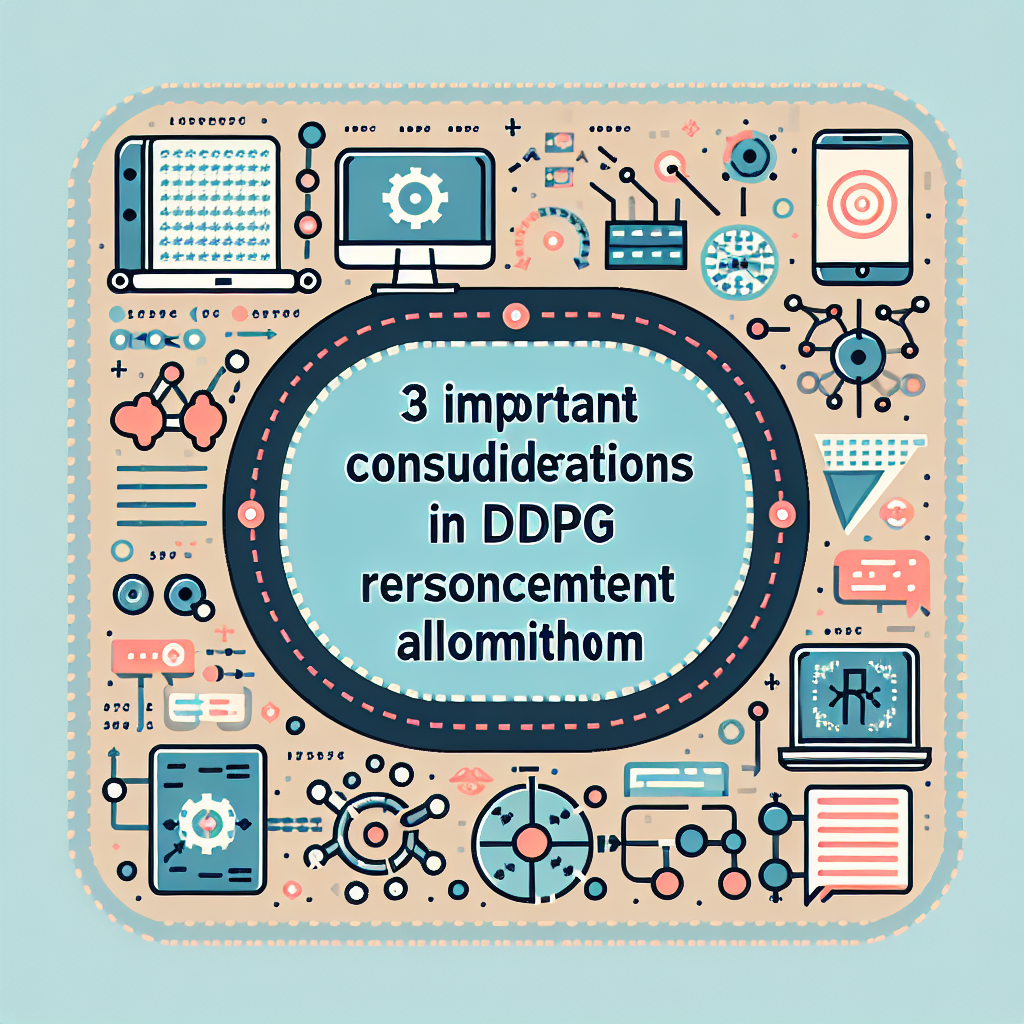Hey there, fellow AI enthusiasts! 🌟 Today, let’s dive into a fascinating topic in the realm of AI and machine learning—Deep Deterministic Policy Gradient, or DDPG. If you’re into reinforcement learning and continuous action spaces, DDPG is a term you’re going to want to get familiar with. But fear not, we’re not going to get lost in the labyrinth of mathematics and jargon. Instead, let’s explore some practical considerations you’ll want to mull over while working with DDPG.
Noise: To OU or Not to OU?
Remember when you were a kid and drew random doodles across your homework while exploring how much you could get away with? That’s kind of what noise does in DDPG—it helps the algorithm explore the action space. One popular method is using the Ornstein-Uhlenbeck process. Sounds fancy, right? It’s essentially a way to generate correlated noise, where the noise at each step depends on the previous step.
But here’s the twist: not everyone needs it! Some folks drop this dependency and just use simple random noise. It’s like choosing between sketching with pens that bleed through your paper or just good old-fashioned crayons. Depending on your problem domain, a simpler random noise might work just fine.
Size of Noise: Not All Noise is Created Equal
Imagine you’re trying to find your keys in a dark room. If you’re wildly swinging your arms around, you’re likely to knock over a lamp (or worse). Similarly, the size of the noise in your DDPG algorithm matters. If valid actions for your task range from -0.01 to 0.01, using a noise with a standard deviation of 0.2 will smack you right out of the valid range!
You want your noise to be Goldilocks-sized—just right. Too big, and your algorithm will spend its time exploring useless areas. Too small, and it might miss some promising spots.
Noise Decay: To Decay or Not to Decay?
Picture training a dog—initially, you give it treats every time it sits. Over time, you start giving treats less frequently. That’s essentially what noise decay does in DDPG. Some argue for slowly reducing the noise during training. Others keep it constant and just drop it when making predictions.
In my experience, if your algorithm is well-trained, it can handle either approach. It’s like having a well-behaved dog that sticks to commands even without treats.
Soft Update of the Target Networks: The Gentle Touch
As you update your policy neural networks, you’ve got to pass some of that learning onto your target networks. The original DDPG paper recommends a “soft update”, where you gradually blend the latest learned weights with the target network weights.
It’s like making a smoothie—add a bit of new fruit every now and then instead of dumping the whole market’s worth at once. A hard update (pouring all the freshly learned weights in one go) can destabilize the neural net. But if your learning rate is low, even a hard update might work fine.
Neural Network Design: The Craft
Now, here’s where things get truly intriguing. Designing a robust neural network to predict actions and values can be quite the art. It’s a delicate dance between the architecture and the behavior of your DDPG algorithm.
Think of it as building a Lego model. You have to understand not just the pieces (features) but how they fit together (network architecture) to form a coherent model. For complex real-world problems, a simple model might not cut it. Dive deep into the domain knowledge and craft a neural network that mirrors this mental framework.
Still Curious?
There’s a lot we didn’t cover, like the discount rate to weigh future rewards. But hey, journeying into the world of DDPG is all about continuous learning and tweaking. Got thoughts or experiences to share? Pop them in the comments below and let’s keep the conversation going!
Liked this dive into DDPG? Share it, clap it, or just spread some love. Until next time, happy coding and may your neural nets be ever stable! 💻✨
Don’t forget to connect with me on social media for more AI adventures and feel free to suggest topics you’d like to see dissected next. Cheers! 🚀
